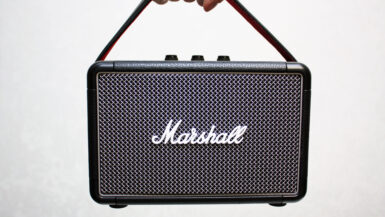In today’s technologically advanced world, voice assistants have become an essential component in elevating the functionality and accessibility of smart homes. As the demand for seamless integration of technology into our daily lives grows, the role of voice assistants in enhancing your smart home’s accessibility cannot be overstated. This article delves into the core topics surrounding the use and evolution of voice-enabled smart home devices, discussing their impact on user experience, the importance of interoperability, and how these devices are revolutionizing the way we interact with our homes. By exploring the real-world benefits and challenges associated with voice assistants, we aim to provide a comprehensive understanding of their significance in transforming our living spaces into truly intelligent environments.
Revolutionizing Daily Routines with Voice-Activated Home Automation
Voice-activated home automation is transforming the way we interact with our living spaces, making daily routines more efficient, personalized, and convenient. By integrating voice assistants into various devices and appliances, we can now control our smart homes with simple voice commands, streamlining tasks and creating a more accessible environment. In this section, we will explore how voice assistants are revolutionizing daily routines, focusing on the aspects of communication, entertainment, and smart appliances.
Effortless Communication and Information Access
Voice assistants, such as Amazon’s Alexa, Google Assistant, and Apple’s Siri, have significantly improved communication and information access within smart homes. By using natural language processing and artificial intelligence, these voice assistants can understand and respond to a wide range of commands, providing instant access to information, news, weather updates, and more. Moreover, they enable hands-free communication with friends and family, making it easy to stay connected without disrupting ongoing activities or tasks.
Enhanced Entertainment Experiences
Voice-enabled devices have also transformed the way we consume entertainment, from music and podcasts to movies and television shows. Voice assistants can seamlessly connect and control various entertainment devices such as smart TVs, sound systems, and streaming devices, allowing users to enjoy their favorite content without the need for multiple remote controls or complex navigation. By simply asking a voice assistant to play a specific song or movie, users can create a personalized entertainment experience with minimal effort.
Smart Appliances for a Smarter Home
One of the most significant advancements in voice-activated home automation is the integration of voice assistants into everyday appliances. From adjusting thermostats and controlling smart lighting systems to operating robotic vacuums and managing kitchen appliances, voice commands have made it easier than ever to manage household tasks. By enabling users to control various devices with just their voice, these smart appliances contribute to a more accessible and user-friendly home environment.
Overall, voice-activated home automation is rapidly changing the way we interact with our living spaces, making daily routines more streamlined and efficient. As voice assistants continue to evolve and integrate with a wider range of devices, we can expect even greater advancements in smart home accessibility and convenience in the years to come.
Seamless Integration: Top Voice Assistants for Your Smart Home Ecosystem
As the popularity of smart homes continues to grow, the importance of choosing the right voice assistant to manage your smart home ecosystem becomes increasingly crucial. In this subsection, we will delve into the top voice assistants currently dominating the market, highlighting their unique features, compatibility with various smart devices, and their overall impact on the seamless integration of your smart home ecosystem.
Amazon Alexa: The Market Leader
Undoubtedly one of the most popular voice assistants, Amazon’s Alexa offers a vast range of features and compatibility with numerous smart home devices. From controlling smart lighting systems and thermostats to managing home security and entertainment systems, Alexa’s capabilities are extensive. Additionally, the Amazon Echo family of devices, including the Echo Dot, Echo Show, and Echo Studio, provides various options for users looking to integrate Alexa into their smart home ecosystem.
Google Assistant: A Formidable Competitor
Google Assistant has emerged as a strong competitor to Alexa, providing a similar range of features and compatibility with a wide array of smart home devices. Google Assistant’s strength lies in its integration with Google services, such as Google Maps, Calendar, and Gmail, making it a powerful tool for users heavily invested in the Google ecosystem. The Google Nest line of products, including the Nest Mini, Nest Hub, and Nest Audio, offers users various options for incorporating Google Assistant into their smart home setup.
Apple Siri: Seamless Integration for Apple Enthusiasts
For users heavily invested in the Apple ecosystem, Siri is the natural choice for a voice assistant. Integrated into iPhones, iPads, Apple Watches, and Apple HomePods, Siri offers seamless compatibility with Apple devices and services. While Siri’s compatibility with third-party smart home devices may not be as extensive as Alexa or Google Assistant, Apple’s HomeKit platform ensures a secure and user-friendly experience for those looking to create a smart home ecosystem centered around Apple products.
Cortana: Microsoft’s Answer to Voice Assistance
Cortana, developed by Microsoft, is another voice assistant option for users looking to enhance their smart home accessibility. While Cortana’s compatibility with smart home devices may not currently be as extensive as its competitors, its integration with Microsoft’s suite of products and services, such as Outlook, Office, and Skype, make it an appealing choice for users invested in the Microsoft ecosystem.
Choosing the right voice assistant for your smart home ecosystem ultimately depends on your personal preferences and the devices and platforms you are already using. By understanding the unique features and capabilities of these top voice assistants, you can make an informed decision that will significantly enhance the accessibility and convenience of your smart home environment.
Enhancing Home Security through Voice-Controlled Surveillance Devices
The integration of voice assistants into home security systems has greatly improved the accessibility and convenience of monitoring and managing household safety. With the ability to control surveillance devices using simple voice commands, homeowners can now effortlessly keep an eye on their property, receive real-time alerts, and take prompt action in case of emergencies. In this subsection, we will explore the various ways voice-controlled surveillance devices are enhancing home security and discuss some of the leading products currently available in the market.
Real-Time Monitoring and Alerts
By incorporating voice assistants into security cameras and alarm systems, users can now access real-time video feeds and monitor their home’s safety with simple voice commands. For instance, asking your voice assistant to show the live feed from your front door camera can provide instant visual access to any visitors or potential threats. Additionally, voice-controlled surveillance devices can send alerts and notifications in case of unusual activity or breaches, ensuring that homeowners stay informed and can take necessary action immediately.
Convenient Control of Security Systems
Voice assistants have made managing home security systems significantly more accessible and user-friendly. With the ability to arm or disarm alarm systems, lock or unlock doors, and control smart lighting to simulate occupancy, homeowners can now easily maintain their property’s safety using just their voice. This level of convenience not only streamlines the security management process but also allows users to focus on other tasks without worrying about their home’s safety.
Emergency Assistance at Your Command
In case of emergencies such as break-ins, fires, or medical crises, voice-controlled surveillance devices can be a valuable tool in calling for help. With a simple voice command, homeowners can contact emergency services, ensuring that assistance is dispatched promptly. This feature can prove crucial in situations where immediate action is required and traditional methods of communication might not be feasible.
Top Voice-Controlled Surveillance Devices
A variety of voice-controlled surveillance devices are available in the market, catering to different security needs and preferences. Some popular options include:
1. Amazon’s Ring Video Doorbell: Compatible with Alexa, this device allows users to monitor their front door, receive alerts when motion is detected, and communicate with visitors using two-way audio.
2. Google Nest Cam Indoor and Outdoor: These cameras integrate seamlessly with Google Assistant, providing real-time video feeds, motion alerts, and two-way audio communication.
3. Arlo Pro 3: Compatible with both Alexa and Google Assistant, this security camera system offers high-resolution video, color night vision, and customizable motion zones for enhanced security monitoring.
The advent of voice-controlled surveillance devices has revolutionized the way we approach home security, making it more accessible and convenient than ever before. By understanding the various features and benefits of these devices, homeowners can make informed decisions to create a secure and seamlessly integrated smart home environment.
Voice-Assisted Energy Management: Saving Time and Money
Incorporating voice assistants into energy management systems has greatly improved the efficiency and cost-effectiveness of managing energy consumption in smart homes. By allowing homeowners to control and monitor energy usage through simple voice commands, voice assistants have enabled a more accessible and user-friendly approach to energy management. In this subsection, we will discuss how voice-assisted energy management can save time and money, as well as some popular devices and features that facilitate this process.
Effortless Control of Heating and Cooling Systems
One of the primary ways voice assistants contribute to energy management is by allowing homeowners to control their heating, ventilation, and air conditioning (HVAC) systems with ease. By using voice commands to adjust thermostats, set schedules, or switch between heating and cooling modes, users can optimize their home’s temperature while minimizing energy consumption. This not only saves time and effort but also contributes to significant cost savings on energy bills.
Smart Lighting Control for Enhanced Efficiency
Another area where voice assistants play a crucial role in energy management is the control of smart lighting systems. With the ability to dim or brighten lights, turn them on or off, or even set schedules and routines through voice commands, users can easily tailor their home’s lighting to their needs while minimizing energy wastage. By optimizing the use of natural light and automating lighting schedules, voice-assisted energy management contributes to a more energy-efficient and cost-effective living environment.
Real-Time Energy Monitoring and Insights
Voice assistants can provide homeowners with valuable insights into their home’s energy consumption, enabling them to make informed decisions about energy usage. By requesting real-time reports on energy consumption or receiving personalized suggestions for energy-saving measures, users can gain a better understanding of their energy habits and make necessary adjustments to minimize waste and save money.
Popular Voice-Assisted Energy Management Devices and Features
Numerous devices and platforms are available to help users integrate voice-assisted energy management into their smart homes. Some popular options include:
1. Smart Thermostats: Devices such as the Nest Learning Thermostat, ecobee SmartThermostat, and Honeywell Home T9 are compatible with various voice assistants, allowing users to control their home’s temperature and monitor energy consumption effortlessly.
2. Smart Plugs and Outlets: Voice-compatible smart plugs and outlets, such as the TP-Link Kasa Smart Plug and Wemo Mini Smart Plug, enable users to control and monitor the energy usage of individual appliances and devices through voice commands.
3. Energy Monitoring Platforms: Platforms like Sense Energy Monitor and Curb Energy Monitoring System provide real-time energy consumption data and insights, which can be accessed through voice assistants for a more comprehensive understanding of your home’s energy usage.
Voice-assisted energy management has significantly simplified the process of monitoring and controlling energy consumption in smart homes. By making energy management more accessible and user-friendly, voice assistants contribute to a more efficient and cost-effective living environment, ultimately saving homeowners both time and money. As voice assistants continue to evolve and integrate with new energy management technologies, we can expect even greater advancements in this area in the future.
Accessibility for All: How Voice Assistants Improve Smart Home Experiences for Disabled Individuals
Voice assistants have proven to be a game-changer in creating a more inclusive and accessible environment for individuals with disabilities. By enabling hands-free control over various smart home devices and providing instant access to information and communication, voice assistants have significantly improved the quality of life for many disabled individuals. In this subsection, we will delve into the various ways voice assistants are enhancing smart home experiences for people with disabilities, showcasing their impact on independence, safety, and overall well-being.
Empowering Independence and Self-Sufficiency
One of the most significant benefits of voice assistants for disabled individuals is the increased sense of independence and self-sufficiency they provide. By allowing users to control various aspects of their living environment, such as lighting, temperature, and entertainment, all through simple voice commands, voice assistants help eliminate the need for physical interaction with devices. This is especially crucial for individuals with mobility impairments, as they can now manage their home environment without relying on others or struggling with physical limitations.
Enhancing Communication and Social Interaction
Voice assistants have also made communication more accessible for individuals with disabilities. By offering hands-free calling and messaging, voice assistants enable users to stay connected with friends and family without the need for physical interaction with devices. For individuals with speech impairments, voice assistants can be integrated with alternative and augmentative communication (AAC) tools to further facilitate communication and provide a more seamless social experience.
Ensuring Safety and Security
The integration of voice assistants into home security systems has not only made it easier for homeowners to manage their safety but has also provided additional benefits for disabled individuals. With voice-activated control over security cameras, alarms, and door locks, disabled users can now monitor and manage their home’s safety with ease. In case of emergencies, voice assistants can quickly call for help, ensuring that assistance is dispatched promptly and potentially life-saving actions can be taken.
Customizable Routines for Improved Quality of Life
Voice assistants allow users to create customized routines and schedules, tailored to their individual needs and preferences. For disabled individuals, this can be particularly beneficial in managing daily tasks and activities, such as medication reminders, therapy sessions, or even simply scheduling time for leisure activities. By streamlining these processes through voice commands, disabled users can focus on living a fulfilling life without the added stress of managing daily tasks.
Adaptable Technologies for Various Disabilities
The versatility of voice assistants makes them an ideal solution for individuals with a wide range of disabilities. For instance, individuals with visual impairments can benefit from the instant access to information, such as news updates, weather forecasts, and audiobooks, provided by voice assistants. Similarly, individuals with cognitive disabilities can benefit from the structured routines and reminders offered by these devices, helping them maintain a sense of order and consistency in their daily lives.
In summary, voice assistants play a crucial role in improving the smart home experiences of disabled individuals. By empowering independence, enhancing communication, ensuring safety, and providing customizable and adaptable solutions, these devices are making a significant impact on the lives of individuals with disabilities. As voice assistant technology continues to evolve and integrate with new devices and services, we can expect even greater advancements in accessibility and inclusivity in the smart home environment.





Leave a reply